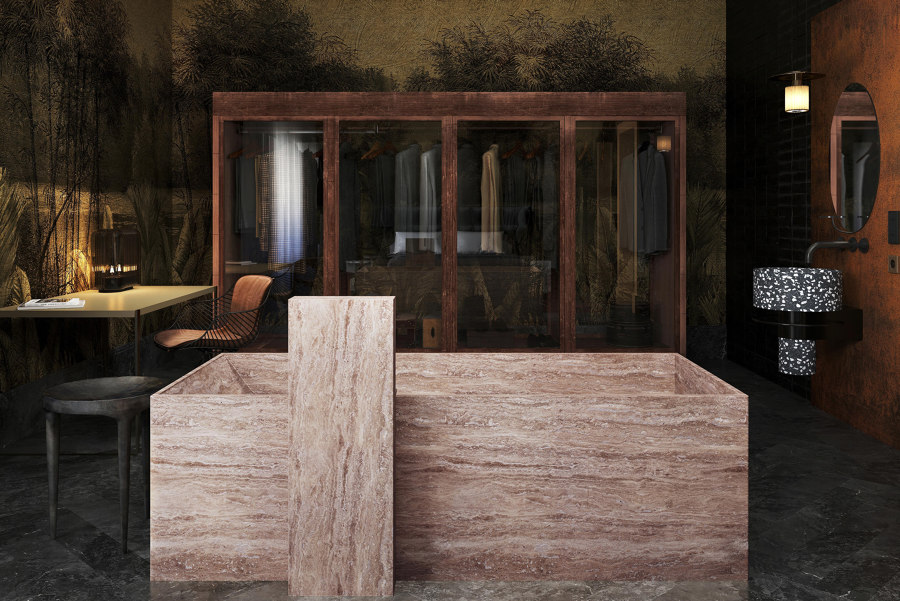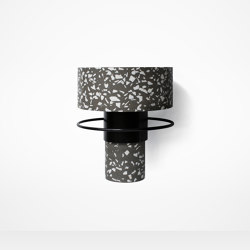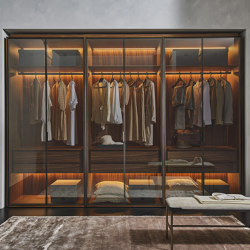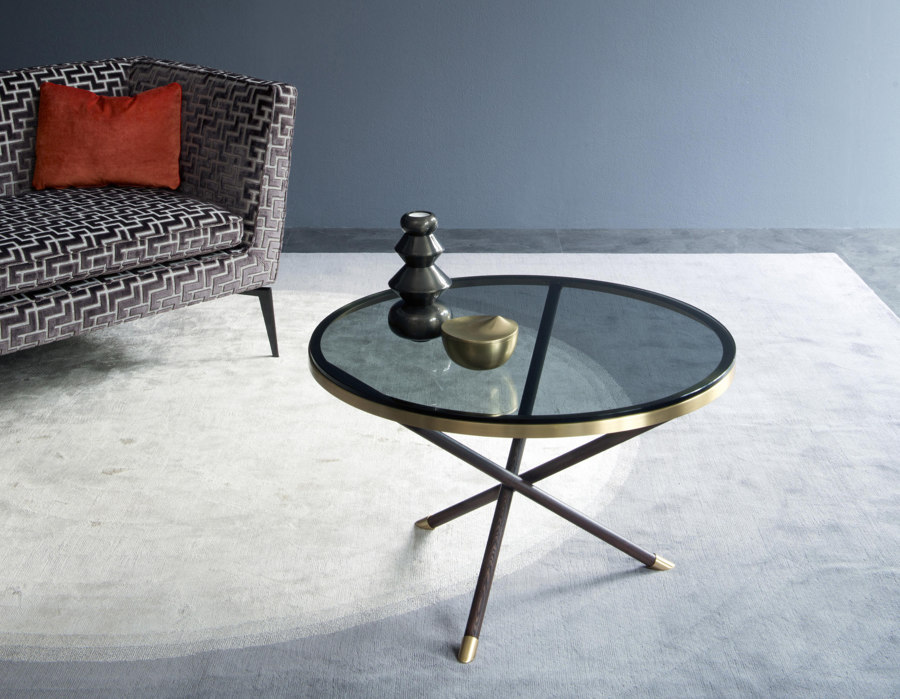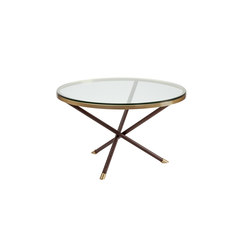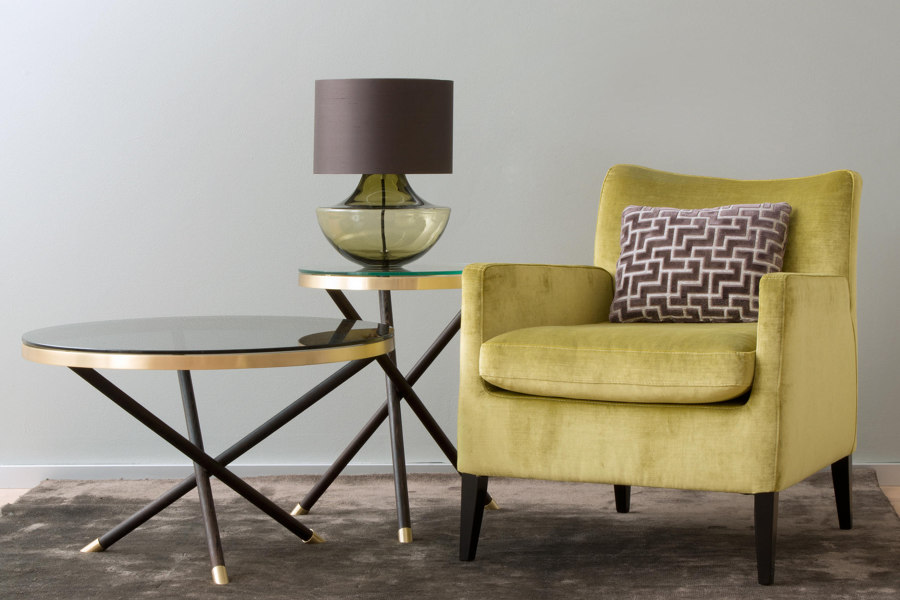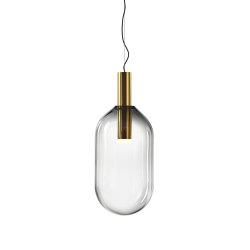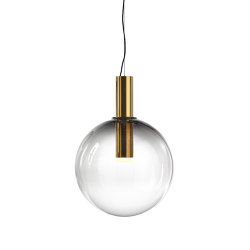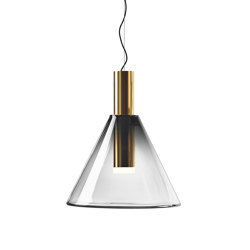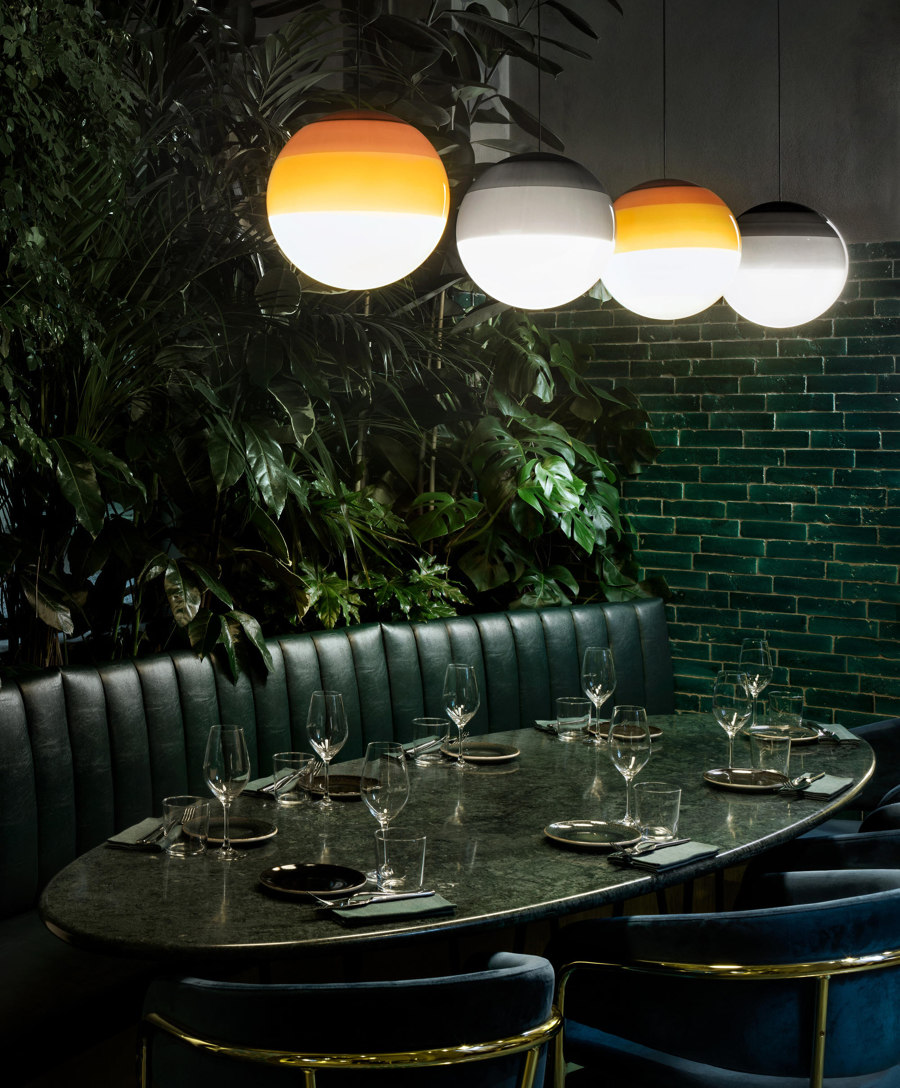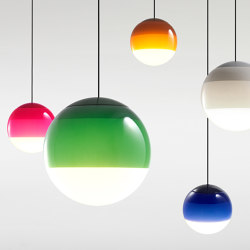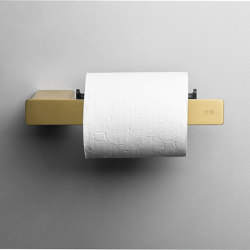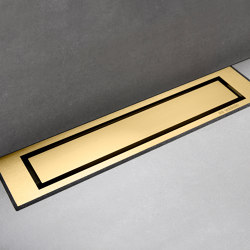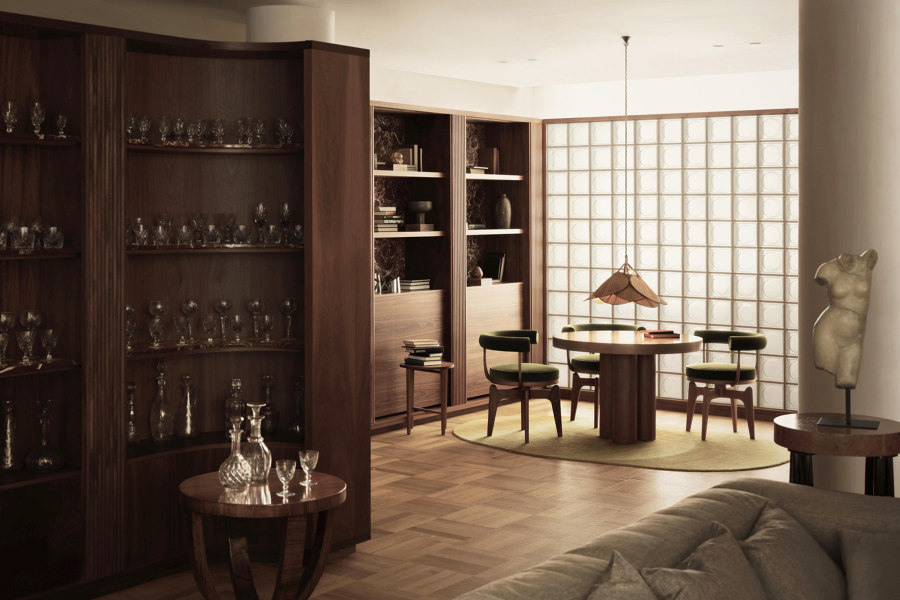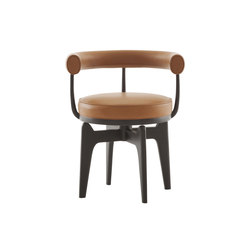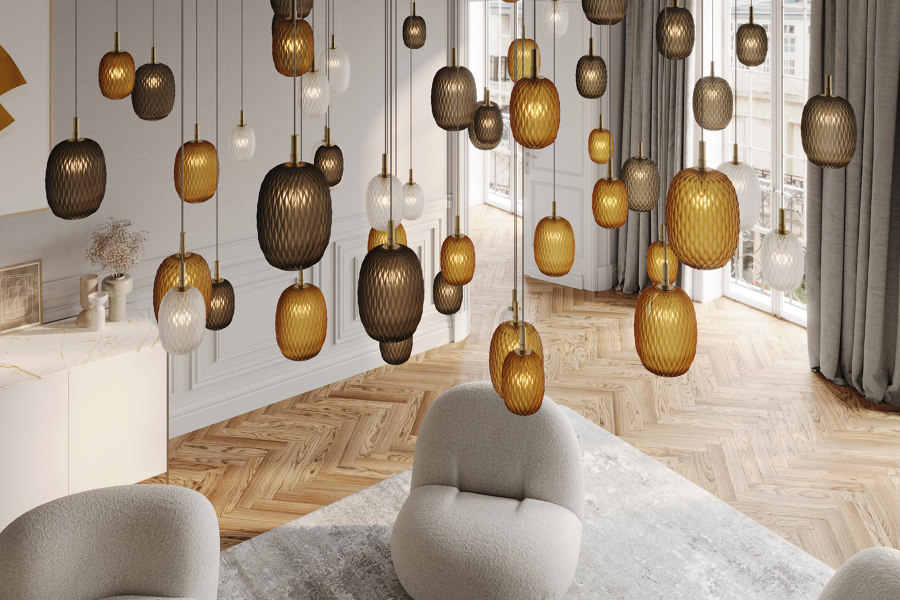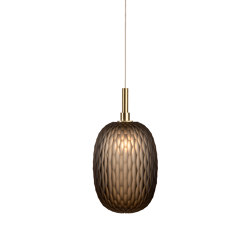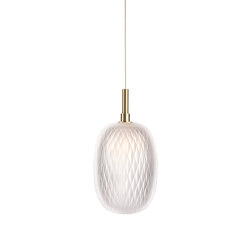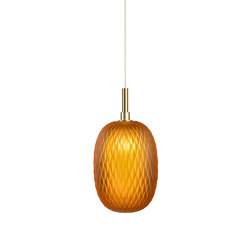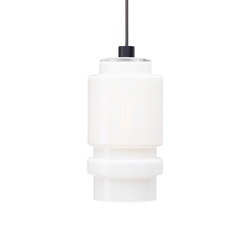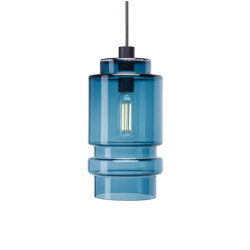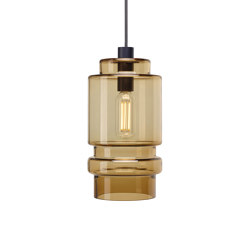How to apply glass in interiors with these five types of product
Scritto da James Wormald
09.11.23
With sustainable materials and joyful colour palettes, this curated selection of artistically formed glass products and the unique interiors they serve is exactly what designers are looking for.
By dipping the Dipping Light into paint numerous times, the fixture provides bright downlight gradually changing to warm ambient light above
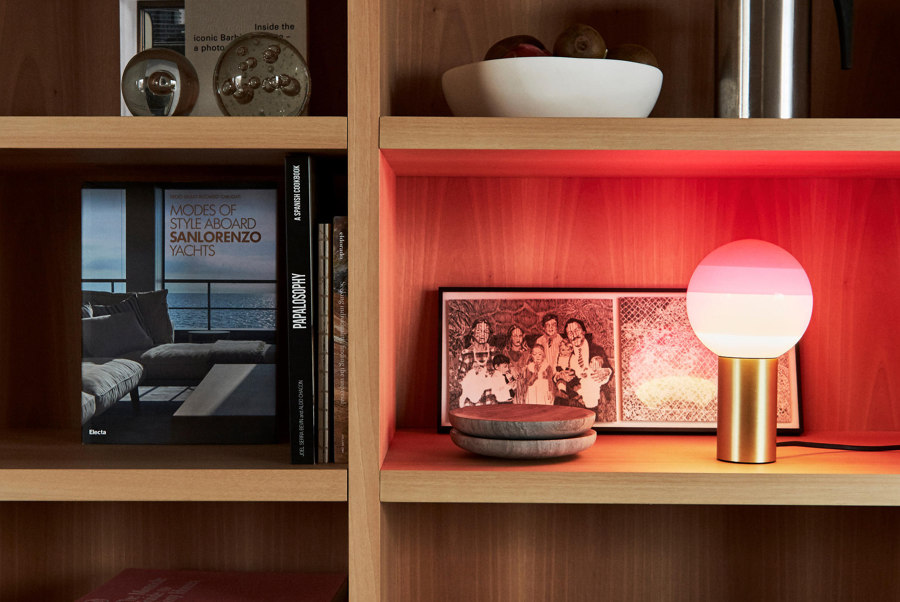
By dipping the Dipping Light into paint numerous times, the fixture provides bright downlight gradually changing to warm ambient light above
×Allowing the desirable parts of our natural environments to pass through, such as light and warmth, whilst filtering out the undesirables like wind and rain, glass is used mainly at the edges of our built structures – in windows or glittering contemporary facades.
However, as a repeatably recyclable material with a life expectancy over 1,000 years and an ability to take uncontrollably unique and artistic forms, glass can be the wonder material that long-lasting, personality-filled interiors dream of, too.
Glass enjoys twice as much functionality as other material options
With high strength and varying opacity, glass can be used in many product typologies from lighting to architectural surfaces to creatively cater to a range of styles. Here are some examples of the timeless qualities provided by glass.
Wardrobes at the Radikal Klassik apartment by Puntofilipino (top) and Porada’s My Suite system (middle, bottom) both front rich wooden cabinetry with glass panels. Photos: Polina Parcevskya and Julie Smorodkina (top)
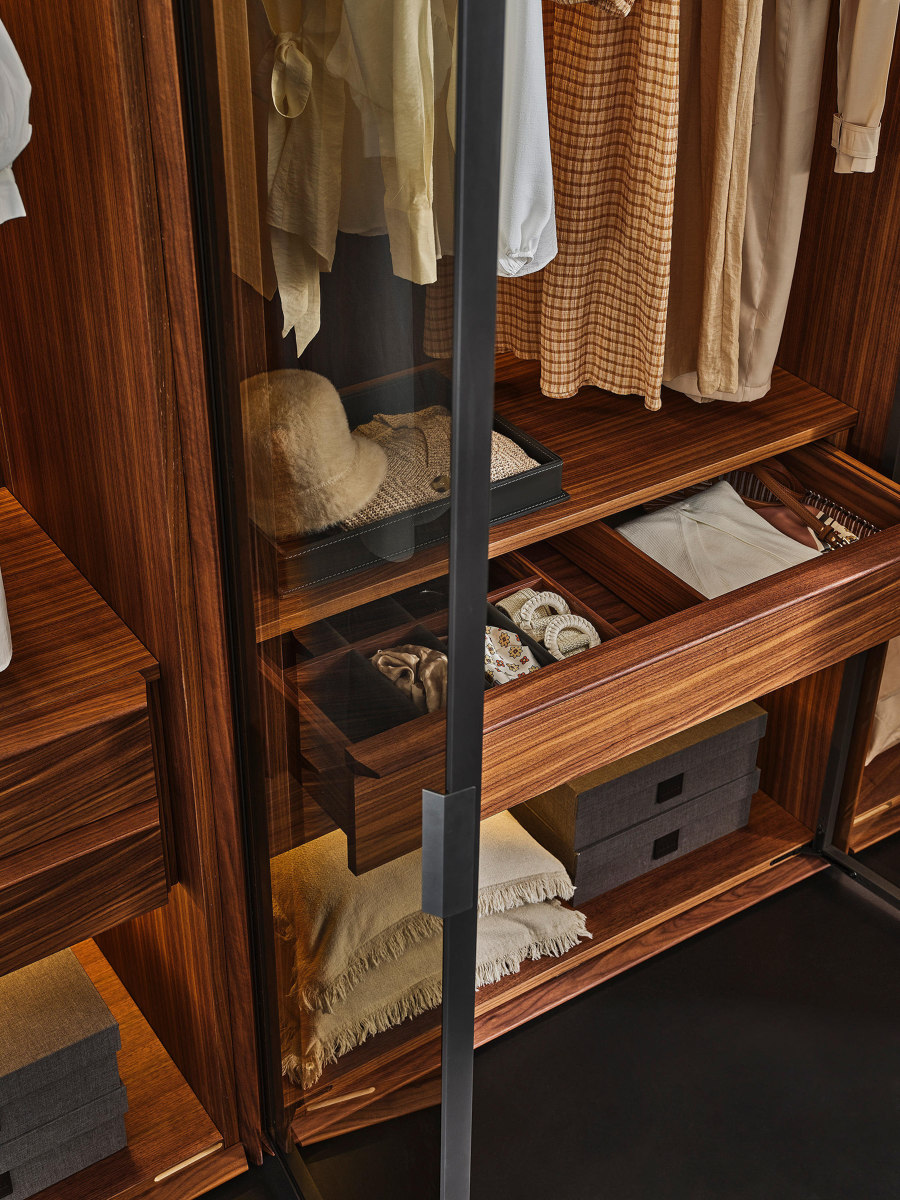
Wardrobes at the Radikal Klassik apartment by Puntofilipino (top) and Porada’s My Suite system (middle, bottom) both front rich wooden cabinetry with glass panels. Photos: Polina Parcevskya and Julie Smorodkina (top)
×Flat glass panels for storage functionality
Glass, it can be argued, enjoys twice as much functionality as other material options. It provides both a strong and stable surface and a chosen level of translucency that is able to hide and reveal at the same time. When used to front storage in the form of shelving, cabinetry and wardrobes, for example, as in the Radikal Klassik project by interior architects Puntofilipino, glass doors create a shine on the surface that both elevates and protects the contents within.
By combining glass with the richness of dark wood, Radikal Klassik’s glass-fronted wardrobes add a timeless warmth to the space. Meanwhile, luxuriously smoked stopsol glass like that used in Porada’s My Suite walk-in closet adds further warmth when combined with a rich Canaletta walnut frame and indirect lighting.
Smoked glass adds luxury and elegance to interior pieces like the Punta Nave tables from Christine Kröncke and PHENOMENA pendants in the B11 House by Negre Studio. Photos: Carlos Terra (bottom)
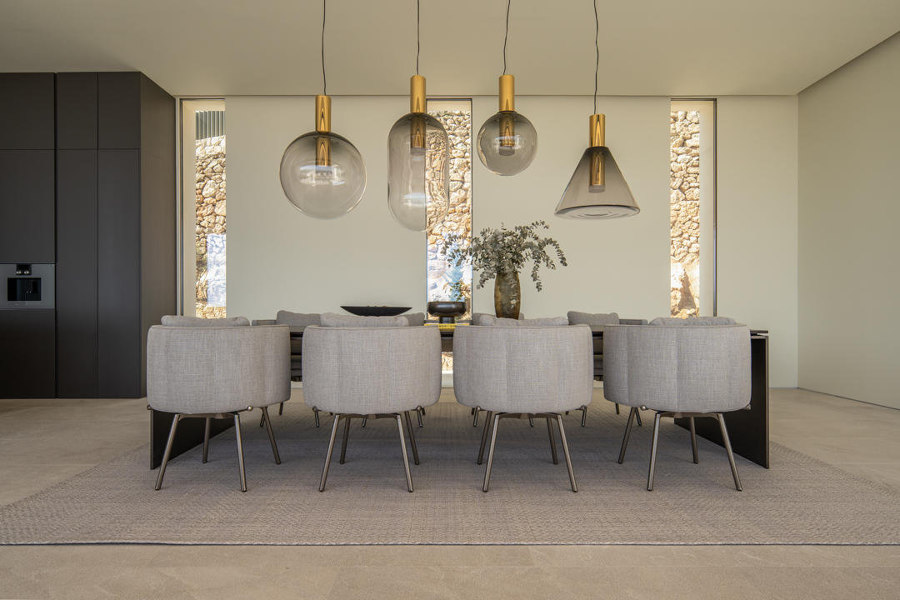
Smoked glass adds luxury and elegance to interior pieces like the Punta Nave tables from Christine Kröncke and PHENOMENA pendants in the B11 House by Negre Studio. Photos: Carlos Terra (bottom)
×Smoked glass as a signal of modest luxury
By applying a chosen number of layers of smoke residue during production, smoked glass can be formed in a simple scale of opacities from clear to black. Christine Kröncke’s range of Punta Nave tables, for example, fills spaces with elegance by resting a smoked glass surface in a polished brass frame on wedge legs.
Bomma's oversized smoked glass PHENOMENA lighting pendants, meanwhile, impose themselves over the dining table at Negre Studio architects' B11 House. The glass transforms from black at its top to clear at the base, giving a combination of brighter downlight to the dining space and softer light up at head height.
Marset’s Dipping Lights (top), stained glass partitions at the Replica House Studio (middle) and a coloured shower panel in Danish singer Mads Langer’s Home (bottom). Photos: Was Ming Ng (middle), Andreas Mikel (bottom)
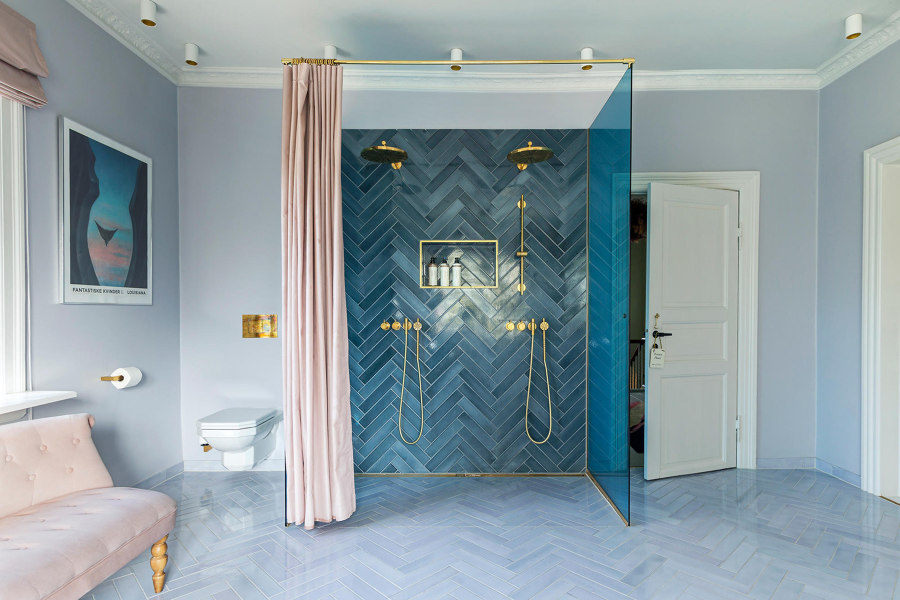
Marset’s Dipping Lights (top), stained glass partitions at the Replica House Studio (middle) and a coloured shower panel in Danish singer Mads Langer’s Home (bottom). Photos: Was Ming Ng (middle), Andreas Mikel (bottom)
×Mesmerising visual effects created with coloured glass
With a similar effect to the smoked glass ceiling pendants at the B11 House above, Marset’s Dipping Light lamps by Jordi Canudas provide bright light underneath, whilst also emanating softer ambient light higher up. This time, however, the effect is created in glorious colour by dipping a glass orb into paint at varying depths, creating a monotone pattern that transforms interiors with a specific hue.
Smoked glass is formed by applying layers of smoke residue during production
Coloured glass, meanwhile, has the ability to play with natural light just as well as artificial. Referencing its liturgical past, Surman Weston architects applied partitions of striking stained glass to spread the joy of colour throughout the interior of the Replica House Studio, and a blue shower panel washes this open walk-in with colour at the Home of Danish Singer Mads Langer, complementing the scene’s brass fixings and hardware.
A glass brick partition allows light into the Mayfair Residence by Child Studio, lightening and warming a space filled with rich wood surfaces. Photos: Felix Speller & Child Studio
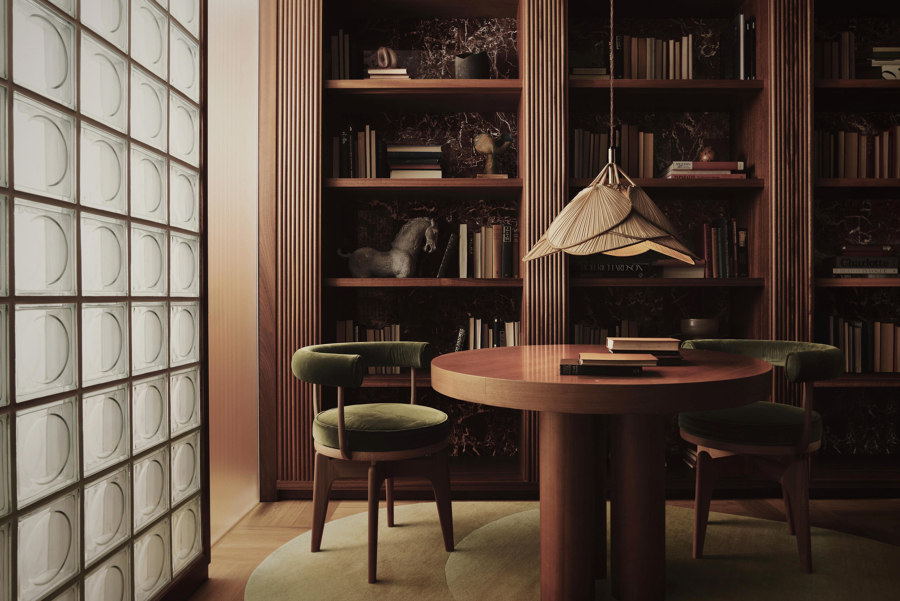
A glass brick partition allows light into the Mayfair Residence by Child Studio, lightening and warming a space filled with rich wood surfaces. Photos: Felix Speller & Child Studio
×Glass bricks used to block everything but light
The sculptural and transparent capabilities of glass can be put to further good use alongside its strength when applied in brick format. Glass brick partitions have the architectural advantage of needing no additional supports, meaning the blocked-off space allows light to stream through without making shadows.
If carved with patterns during manufacturing, however, such as the glass brick partitions in this Mayfair Residence by Child Studio, for example, a soft glow and engaging light patterns are the results. This ensures the Residence, filled with rich material shades like the red Rosso Levante marble cladding, dark mahogany wood and velvet green upholstery, never feels gloomy.
Glassblowing techniques such as fluting, cutting and incalmo respectively bring an Art Deco style to the Hoxton Hotel (top), Metamorphosis lights (middle) and Axle lights (bottom). Photos: The Hoxton Charlottenberg Berlin (top)
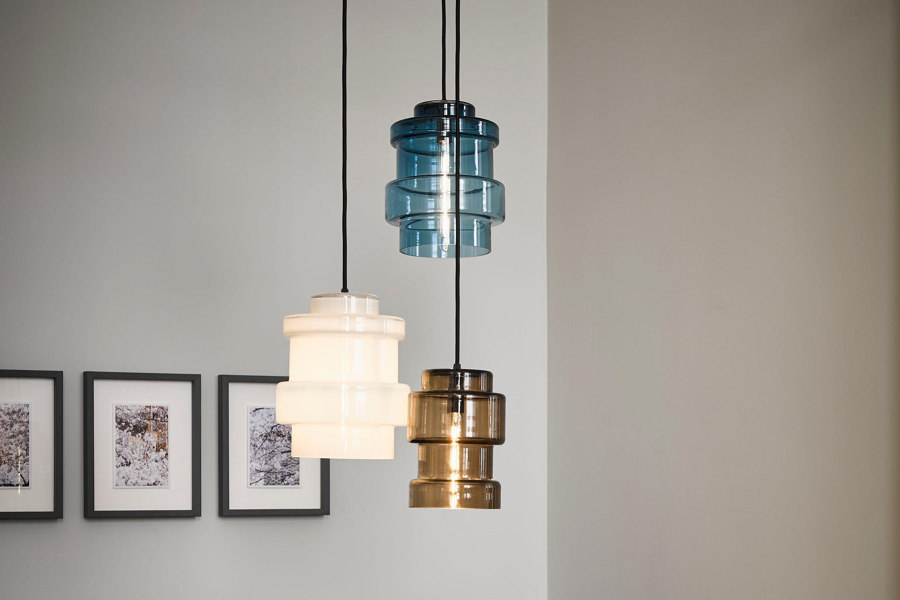
Glassblowing techniques such as fluting, cutting and incalmo respectively bring an Art Deco style to the Hoxton Hotel (top), Metamorphosis lights (middle) and Axle lights (bottom). Photos: The Hoxton Charlottenberg Berlin (top)
×The sculptural look of artistically blown glass
With man (and woman) and machine working perfectly in unison, glassblowing is an art form that’s as creative as the stunning creations formed by the world’s most talented blowers. And with the unpredictable nature of the glassblowing process meaning even mass-produced items are each unique, designers of large or small spaces don’t always need one-off sculpted pieces to add character and personality.
The unpredictable nature of glass-blowing means even mass-produced items are unique
Adding simple surface patterns such as fluting and cutting to blown-glass objects, as seen in the light fixtures and cabinet fronts at The Hoxton hotel in Berlin and the elegant surface of Bomma’s Metamorphosis lamps, for example, fills spaces with an ornate Art Deco style. Alternatively, by using the incalmo method of fusing one blown glass section with another, designs with multiple layers and dimensions of glass, such as the Axle pendant from experts Hollands Licht, can be formed.
© Architonic
Head to the Architonic Magazine for more insights on the latest products, trends and practices in architecture and design.


